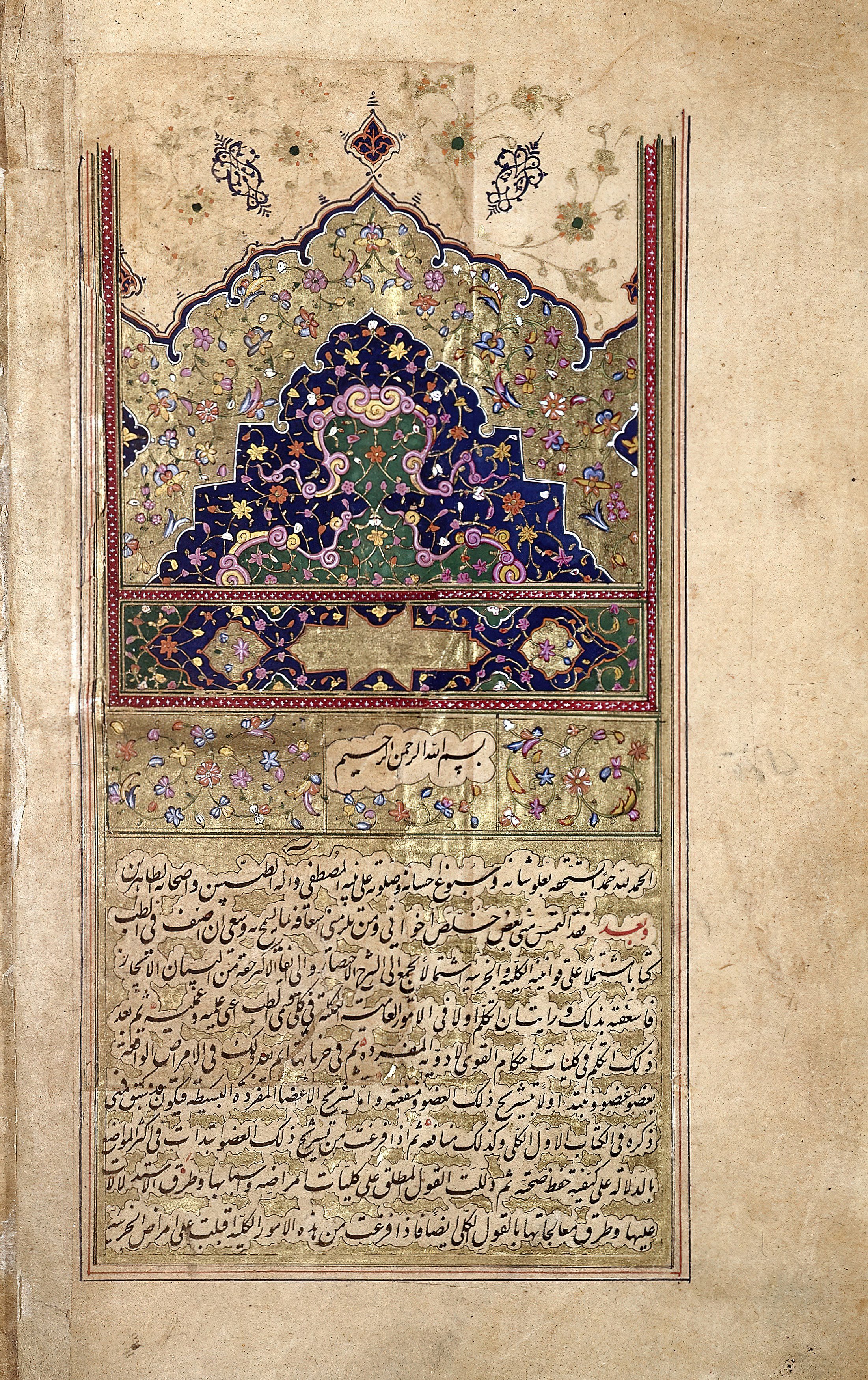MEDICAL ENCYCLOPEDIA IN A BOSNIAN VILLAGE
Author: Ekrem Tucaković, PhD, Riyasat of the Islamic Community in Bosnia and Herzegovina • Illustration: Ibn Sina (Avicenna), Kanun (Canon Medicinae), 1632 • Source: Wikimedia Commons
Many oral and written testimonies have been preserved about modest and low-profile Bosnian people, one could even say polymaths, who lived far from urban and intellectual centers, but whose admirable lives and knowledge were outstanding examples of high learning, morality and consistence in their own beliefs. One of such testimonies about a seemingly common village hadji whose home library, after his death, actually revealed the imam's surprising scientific interest and work was left by Husein-ef. Đozo.
In newspaper Preporod of 1 April 1975, in the series entitled “Radi ibretaˮ Husein-ef. Đozo writes about Hilmi-ef. Šarić. He was born in the village of Vukovići near Tarčin in 1878. Having completed Daru-l-muallimin, he worked as a muallim (teacher) and the imam in the jamaat of Korča, which encompassed settlements Tarčin, Raštelica and several others. He died on 16 April 1951.
Đozo writes that he once met him in Tarčin, but that he did not have the opportunity to talk with him. “It seemed to me, at the first glance, that he was a humble village hadji who was dressed very modestly, and in the old-fashioned way... He enjoyed great authority in the jamaat. He was very devout and extremely consistent. He did what he talked about. He acted among the jamaat members more by his own example than by words and speeches.”
However, Đozo points out that it was only after his death that he discovered the true Hilmi-ef. And that for him, it was a true revelation. While hiking through Vukovići in summer, Đozo met Huso Šarić, Hilmi-ef.'s brother, who told him about his brother's library and asked him to take a look at it. As he believed that these were standard Islamic books, Đozo did not express a particular interest and did not hurry; however, the library was a “real surprise”ˮ.
“Among the books, I found a large number of precious manuscripts. The climax of the surprise was the moment when I found, in the village house in such a secluded mountain village, in the library of a village hadji, the famous work Kanun by Ibni Sina.”
A reminder: Ibn Sina (Latinized name Avicena, 980-1037) was one of the greatest Muslim philosophers, scientists and physicians. He was the author of many works in the field of philosophy, theology, medicine, psychology, astronomy, alchemy and music. He wrote extensive commentaries on Aristotle's works. Some of his best-known works include monumental encyclopedias Book on Healing (Kitāb al-šifā’) and Book on Salvation (Kitāb al-nağat). Ibn Sina was the most significant physician and representative of Muslim medicine, and his work Code of Medicine (Al-Qānūn fī’l-ṭibb) is a medical encyclopedia and a distinctive attempt to systematize the overall medical knowledge. It consists of five books, which deal with the following fields: anatomy, physiology, pathology, hygiene, pharmacology, diagnostics, surgery and cosmetics. Kanun has been translated into many world languages, it is considered as one of important books in the history of medicine, and for a long time it was an unavoidable textbook at European medical colleges.
Đozo writes: “I thought that it was the most valuable work in this library, kept in some old wardrobes, on shelves and in closets. But it was not... At one end of a wardrobe, I noticed a pile of big notebooks. I began to read them. It was a manuscript. I immediately noticed that the text was written in Arabic letters. It was written in pencil. It was obvious that the manuscript was not old. I immediately concluded that the handwriting was Hilmi efendi's. I took a better look and realized that it was a translation of the Qur'an. I could not even imagine that it could be a translation of the whole Qur'an. I was wrong. To my enormous surprise, I was looking at a large number of notebooks with the complete translation of the Qur'an and a short commentary, I believe according to al-Jaalayn. I tried to establish the accuracy and correctness of the translation. I took one notebook with me and kept it for a while. I established that the author Hilmi ef. had a good knowledge of Arabic and that he translated correctly. The translation was, as I said, written in Arabic letters, in popular language, in a simple and direct style. I assessed that the translation has a distinctive value. I tried to explain it to Huso Šarić, who inherited all these from his deceased brother Hilmi efendi. I recommended to him to offer the manuscripts, together with the translation of the Qur'an, to Gazi Husrev-beg's library in Sarajevo. He wholeheartedly offered, to Gazi library, all the books and manuscripts free of charge, except for the translation of the Qur'an, which he, as he said, used and had to keep it.”
The fact that Hilmi-ef. had a sound, even excelling, knowledge of Arabic, because he was able to translate the Qur'an, also proves that the medical encyclopedia which Ibn Sina wrote in Arabic did not come to the imam's library by chance, but that he was able to read and actively use it.
Đozo goes on to write that he talked with people from the Oriental Studies Institute and Gazi Husrev-beg's Library about the need to preserve this manuscript at any cost; however, he does not know what happened to the translation of the Qur'an after Huso Šarić's death.
Finally, Đozo says that he thought “and am still thinking” about Hilmi-ef. Šarić. “Whenever I go above Vukovići, I remember his library, Kanun Ibni Sina and the Translation of the Qur'an. I remember the modest, almost unknown village hadji, who was nevertheless a significant personality. I admire him and give him full credit. I know where and under what circumstances he worked.”
References:
Preporod, no. 7 (110), 1 April 1975, p. 5.

